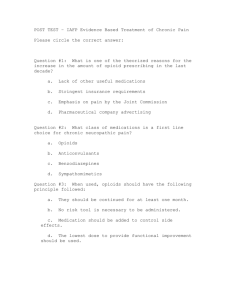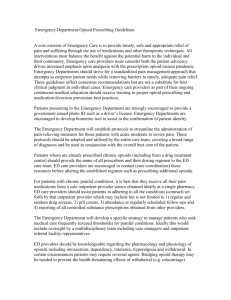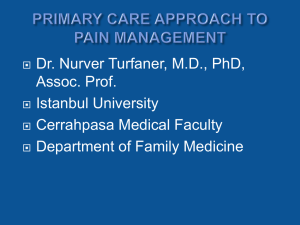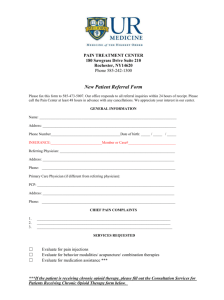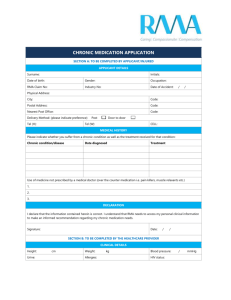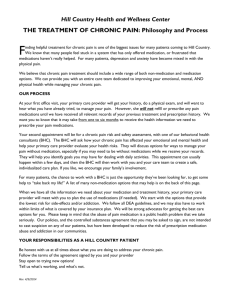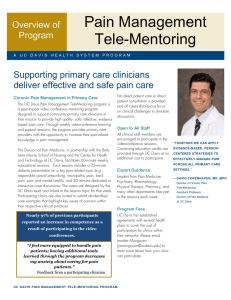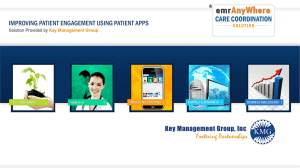Pathway for Patient with Chronic Pain Complaint
advertisement
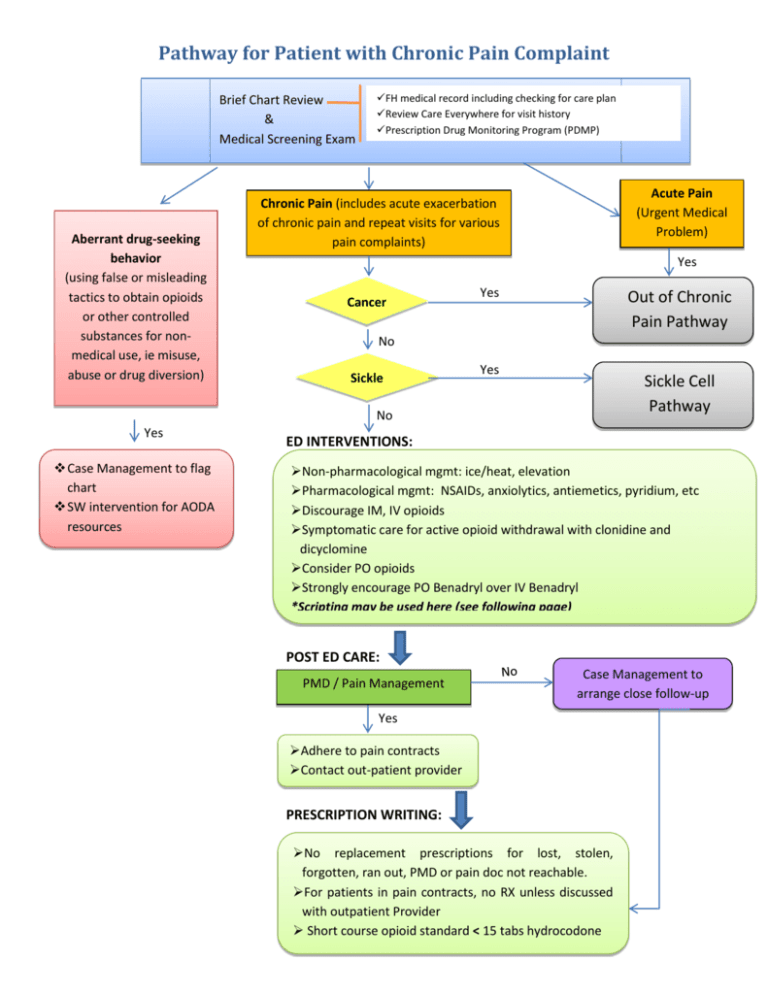
Pathway for Patient with Chronic Pain Complaint Brief Chart Review & Medical Screening Exam Aberrant drug-seeking behavior (using false or misleading tactics to obtain opioids or other controlled substances for nonmedical use, ie misuse, abuse or drug diversion) 1 FH medical record including checking for care plan Review Care Everywhere for visit history Prescription Drug Monitoring Program (PDMP) Acute Pain (Urgent Medical Problem) Chronic Pain (includes acute exacerbation of chronic pain and repeat visits for various pain complaints) Yes Cancer Yes Out of Chronic Pain Pathway No Sickle Yes Sickle Cell Pathway No Yes Case Management to flag chart SW intervention for AODA resources ED INTERVENTIONS: Non-pharmacological mgmt: ice/heat, elevation Pharmacological mgmt: NSAIDs, anxiolytics, antiemetics, pyridium, etc Discourage IM, IV opioids Symptomatic care for active opioid withdrawal with clonidine and dicyclomine Consider PO opioids Strongly encourage PO Benadryl over IV Benadryl *Scripting may be used here (see following page) POST ED CARE: PMD / Pain Management Case Management to arrange close follow-up Yes Adhere to pain contracts Contact out-patient provider PRESCRIPTION WRITING: No replacement prescriptions for lost, stolen, forgotten, ran out, PMD or pain doc not reachable. For patients in pain contracts, no RX unless discussed with outpatient Provider Short course opioid standard < 15 tabs hydrocodone *Scripting Strategies for Drug-Seekers & Superusers (Studer Group) Patients exhibiting inappropriate drug-seeking behavior who have NOT frequented the ED “It is important that we discover the cause of your pain rather than just treat it. Once I understand what is causing your pain, I can give you something that can help reduce it.” “For this condition, I usually prescribe (insert non-opioid medication name).” “Usually it is not possible to completely eliminate your pain, so our goal today is to reduce it to a more tolerable level.” “I acknowledge that you are having pain from (condition). A prescription for (NSAID) can benefit you, as it can decrease the inflammation that is causing your pain and make you feel better.” “I’m sorry, but I will not prescribe some of the other medications we have already talked about.” Patients exhibiting inappropriate drug-seeking behavior who HAVE frequented the ED “In looking over your medical records, I see you have visited us (+/- other EDs/urgent care facilities) various times over the past (days, weeks, months).” “It looks like you have received a number of prescriptions for (controlled substance[s]) at these visits from a number of different doctors, which concerns me.” “I want to help you today, but I do not feel comfortable treating you with (class of medication). I want to make you feel better and can offer you a number of different treatment options, but none of them will involve giving you (class of medication).” “Let’s agree that after today, you will make every effort to see you own doctor for any follow-up, because your visits have become so frequent that our doctors will no longer be prescribing you opioids (or other class of medication) for you.” “We believe in having you work with a single physician to create long-term strategy for managing your condition, which often involves other treatment options for your pain besides chronic opioid use.” Chronic pain patient that has a pain contract on file who presents for treatment of their chronic pain and has not followed the guidelines stipulated in the pain contract (for example, not following up, seeking opioid prescriptions from provides other than his/her pain doctor) “I want to help you feel better today.” “Our policy requires doctors to follow pain contracts all the time, and therefore I cannot give you your usual medication, but we can try some other things that may make you feel better.” “To make sure your concerns are addressed, I will notify your doctor that you came in today so that he/she can discuss further care options.”
